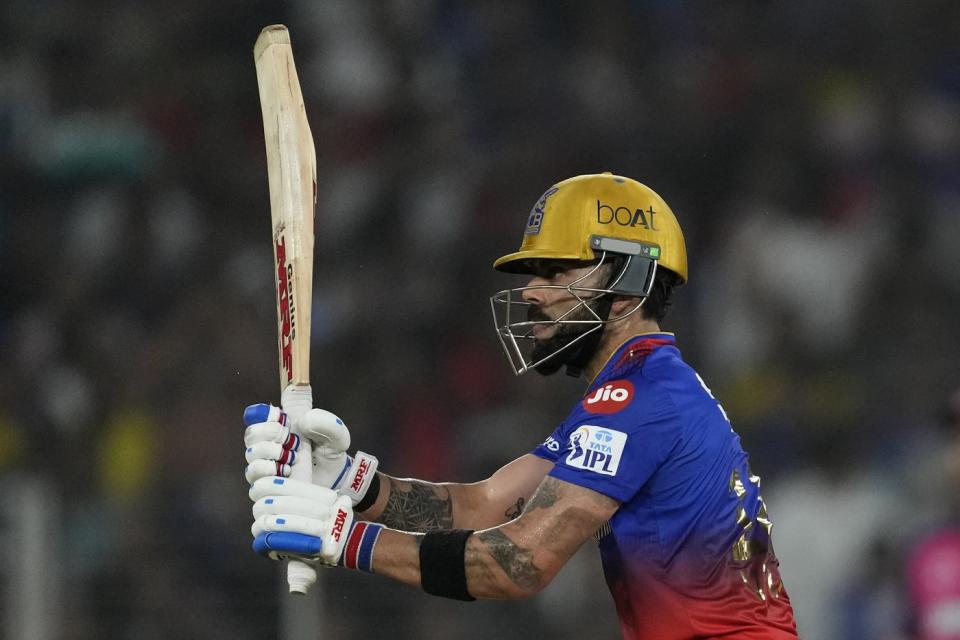T20 World Cup uses cricket's fast and furious format. The tempo appeals to new and existing fans

The first cricket World Cup to be hosted on U.S. soil starts June 1 and will be shared with countries in the Caribbean, represented by the two-time champion West Indies.
Fear not. It won't drag on.
This World Cup is in the Twenty20 format, the fastest and most action-packed version of cricket.
Unlike test cricket matches, which started out as timeless before being shortened to five days, T20 doesn’t require any breaks for tea or lunch and is completed in just over three hours — roughly the same as a Major League Baseball game.
Players wear colorful uniforms, unlike the all-white wardrobe for test cricket.
WHEN DID TWENTY20 CRICKET START?
T20 was first played at franchise level in England in 2003. That makes it a baby in terms of cricket, which has been played in one form or another for at least 400 years.
Within four years, T20 had its own World Cup and it has spawned far-flung leagues in traditional and new cricket markets. The most lucrative franchise cricket competition by far is the Indian Premier League.
Major League Cricket, which attracts players from around the world, made its debut in the U.S. last year. Season 2 will launch July 4, four days after the T20 World Cup final.
SPEED AND ENTERTAINMENT
The two important factors with the T20 format: It hurries the game up, meaning, generally, much more excitement. The game is also shortened time-wise and, is easier to consume for young fans, those new to the sport or — and this is key — for TV programming slots.
While the format leads to high-tempo action on the field, T20 has also sparked an evolution in off-field entertainment in cricket. Cheerleaders dancing on podiums, DJs sitting behind decks spinning tunes and fancy dress themes are all part of the T20 game for crowds, bringing a colorful new twist for those at the stadium and broadcast viewers.
There's generally a party atmosphere and often prizes for anyone who can make a one-handed catch when a player hits the ball into the crowd. Unlike baseball, though, the ball must be returned to the field.
RULES
Cricket’s main rules still apply in T20 games, meaning there might still be a steep learning curve for new fans unfamiliar with the leg before wicket law, or “lbw” for short — when a batter is called out for using his protective leg pads to block a delivery from hitting the stumps.
At least there will be no ties. Test cricket has two ways for a game to have no winner, even if it’s been going on for five days.
But in T20, even if the teams get exactly the same number of runs — 150 runs is an average score and more than 200 is a good score — then there is a “Super Over” to decide the game. That means each team faces one over of six balls to smash as many runs as it can and whoever wins that tie-breaker wins the game.
THE FINER DETAILS
Like test and one-day international cricket, it’s a game between two teams of 11. Each team gets to bat for 20 overs (a series of six deliveries from the same bowler) which translates to 120 deliveries, excluding extras, per inning. Hence the name Twenty20.
The leather ball is white and similar in appearance to a baseball.
Bowlers run to the crease and use a rotating arm action to bowl the ball and try to knock the bails off three 28-inch stumps from the opposite end of the 22-yard pitch. Batters try to protect the stumps while scoring runs as quickly as possible by hitting the ball over or between fielders.
And so, at least in the T20 format, they regularly hit the ball out of the ground, not unlike a home run.
PAST WINNERS
Unlike the traditional Cricket World Cup, which was first contested in 1975, has been played mostly in the the 50-over format and has been dominated by six-time champion Australia, success in the global T20 tournament has been more evenly shared. Only West Indies, representing the Caribbean nations, and England have won it twice. India, Pakistan, Sri Lanka and Australia have one T20 title each.
THE STARS
Virat Kohli, India: A feisty and formidable batter who has set records in the Indian Premier League and over a long career with the national team. There's an array of high-profile stars in the India squad but none has a bigger following than the 35-year-old former captain.
Rashid Khan, Afghanistan: The 25-year-old leg-spinner has been the top-ranked T20 bowler in international cricket and is still very much in the Top 10. He's a star in the IPL and for the Afghan national team.
Jofra Archer, England: If he's fit, he's super fast. The Barbados-born paceman hasn't played a lot of cricket in the last few years because of injury but has been rushed back into the squad for the defending champions because of his intimidating bowling and experience in Caribbean conditions.
Mitch Marsh, Australia: A big, burley “allrounder” — meaning he bats and bowls — Marsh can get an innings away to a blazing start and also bowl with pace. He has been recovering from a hamstring problem which curtailed his IPL season and isn't likely to bowl at the start of the World Cup but will play as captain regardless. He was the player of the final when Australia clinched its first T20 world title in 2021.
___
South Africa-based Associated Press writer Gerald Imray contributed.
___
AP cricket: https://apnews.com/hub/cricket
John Pye, The Associated Press

 Yahoo Sports
Yahoo Sports 
